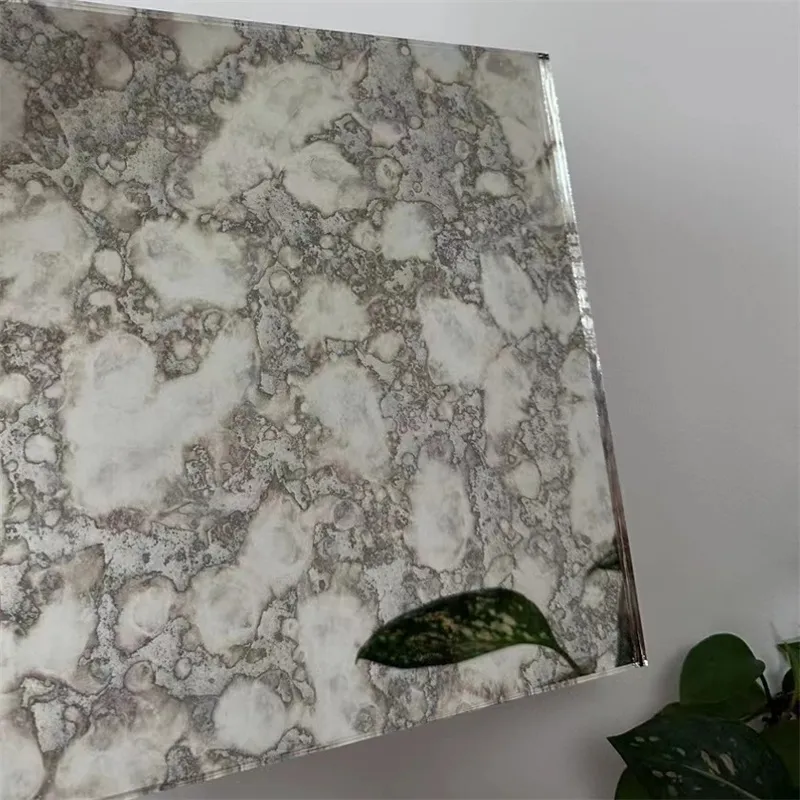Dec . 04, 2024 18:08 Back to list
what is the difference between tempered glass and regular glass
The Difference Between Tempered Glass and Regular Glass
When it comes to choosing the right type of glass for your project, understanding the differences between tempered glass and regular glass is crucial. Both types of glass have unique properties and applications, making them suitable for different purposes. In this article, we will explore the key differences between tempered glass and regular glass, highlighting their characteristics, manufacturing processes, and advantages.
What is Regular Glass?
Regular glass, also known as annealed glass, is the most common type of glass used in various applications. It is made from silica sand, soda ash, and limestone, which are melted together at high temperatures and then slowly cooled to relieve internal stresses. This slow cooling process gives regular glass its typical properties, including clarity, versatility, and ease of cutting.
However, regular glass has a significant drawback it is relatively fragile and can break easily under stress. When it does break, it shatters into sharp, jagged pieces that can pose a safety risk. This inherent weakness makes regular glass unsuitable for many applications where safety and strength are critical.
What is Tempered Glass?
Tempered glass, on the other hand, undergoes a special manufacturing process that significantly enhances its strength and safety features. After being cut to size and shaped, tempered glass is heated to high temperatures—typically around 1,300°F (700°C)—and then rapidly cooled. This process, known as tempering, creates compressive stresses on the surface of the glass, making it much stronger than regular glass.
what is the difference between tempered glass and regular glass

The unique properties of tempered glass include - Increased Strength Tempered glass is five to six times stronger than regular glass of the same thickness, making it much more resistant to impact and thermal stress. - Safety In the event of breakage, tempered glass fractures into small, blunt pieces rather than sharp shards, reducing the risk of injury. - Thermal Resistance It can withstand higher temperature changes, making it ideal for applications where temperature fluctuations occur, such as shower doors or glass panels in buildings.
Applications
The differences in strength and safety make tempered glass ideal for a variety of applications where regular glass may not be suitable. Common uses for tempered glass include - Shower Enclosures The safety and waterproof qualities of tempered glass make it perfect for bathrooms. - Glass Doors and Windows Tempered glass is widely used in doors and windows, especially in commercial buildings, due to its enhanced strength. - Automotive Use Car manufacturers often use tempered glass for side and rear windows, ensuring passenger safety. - Glass Tables and Shelving Many furniture items incorporate tempered glass to provide a stylish yet durable surface.
In contrast, regular glass is often used in non-structural applications, such as picture frames, mirrors, and basic glassware. Its cost-effectiveness makes it attractive for projects where safety is not a primary concern.
Conclusion
In summary, while both tempered glass and regular glass have their respective uses, their differences in strength, safety, and manufacturing processes make tempered glass a superior choice for many applications. If you require a glass product that can withstand impact, thermal stress, and provide safety, tempered glass is undoubtedly the best option. On the other hand, for applications where the beauty of glass is prioritized over strength, regular glass can still serve well. Ultimately, understanding these differences will help you make an informed decision for your specific needs.
-
Safety and Style with Premium Laminated Glass Solutions
NewsJun.24,2025
-
Reinvents Security with Premium Wired Glass
NewsJun.24,2025
-
Premium Float Glass Line for Modern Architecture
NewsJun.24,2025
-
Low Emissivity Glass for Energy-Efficient Architecture
NewsJun.24,2025
-
High-Performance Insulated Glass Solutions for Modern Architecture
NewsJun.24,2025
-
Elevates Interior Style with Premium Silver Mirror
NewsJun.24,2025
Related PRODUCTS














